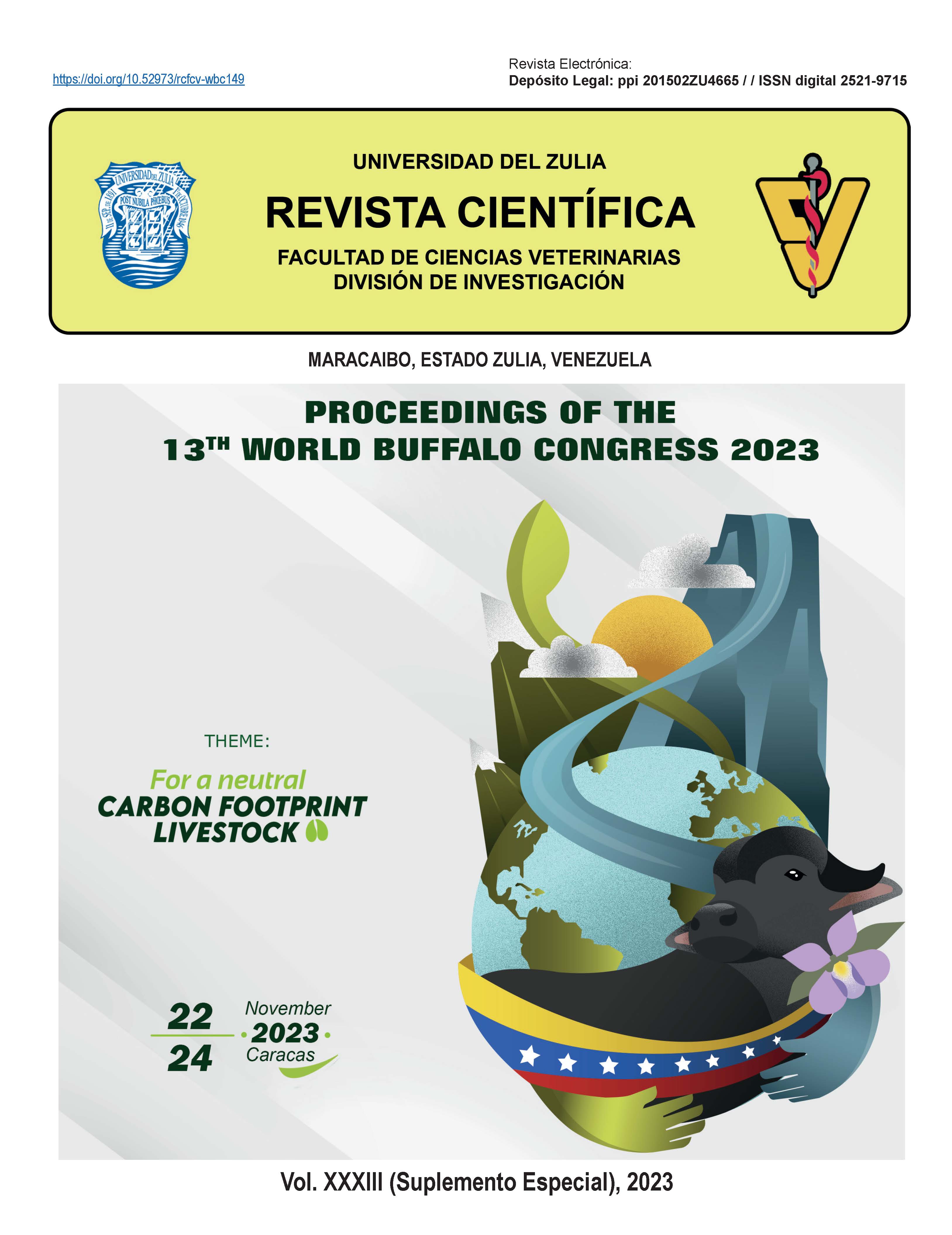Poly (ADP-ribose) (PAR) levels in Peripheral Blood Mononuclear Cells (PBMC) during peri-implantation and early pregnancy in buffalo cows
Abstract
Poly(ADP-ribosyl)ation (PAR) is a reversible post-translational protein modification catalyzed by enzyme members of the poly(ADP-ribose) polymerases (PARPs) family. PAR is receiving growing attention due to its involvement in various biological processes. Despite many studies on humans, very little data on PAR in livestock are reported in the literature. Since its involvement in the blastocyst implantation has been hypothesized and considered the importance of markers for predicting pregnancy success, with this study, we wanted to evaluate dynamic changes in PAR levels during peri-implantation and early pregnancy in peripheral blood mononuclear cells (PBMCs) in buffalo species. Blood samples from 12 buffalo cows were collected on days 14, 19, and 28 after artificial insemination (AI), and PBMCs were isolated. Buffalo cows were divided ex post into pregnant (n=7) and non-pregnant (n=5) groups on Pregnancy-associated glycoproteins (PAGs) plasma concentrations and transrectal ultrasonography. The concentration of PAR levels (pg/mL) was determined in PBMC cellular extracts using the HT PARP in vivo Pharmacodynamic Assay II (Trevigen). The repeated measures ANOVA tested differences in mean values across time points and between experimental groups. This is the first study that evaluates PAR levels in bubaline PBMC during peri-implantation and early pregnancy. Results showed a different trend between the two groups. On day 14 after AI, the pregnant animals showed an increase of PAR compared to the non-pregnant group (23.12 ±18.96 vs 15.30 ±12.11 pg/mL, respectively), although the difference was insignificant. Interestingly, in the subsequent sampling period, the pregnant animals showed a constant decrease of PAR levels (19.64 ±8.81 and 3.49 ±4.71 pg/mL on days 19 and 28 after AI; p=0.019), reaching significantly lower levels compared to non-pregnant animals on day 28 after AI (3.49 ±4.71 vs. 18.75±5.76 pg/mL, respectively; p=0.001). The non-pregnant group showed a fluctuating trend of PAR (15.30 ±12.11, 29.09±17.30, and 18.75±5.76, on days 14, 19 and 28, respectively). In conclusion, although it can be considered an exploratory and preliminary study, results provide new evidence that PAR could be involved in mediating pregnancy success in dairy buffalo. However, further studies are needed to clarify the role of PAR modification during the establishment and maintenance of pregnancy in livestock.
















